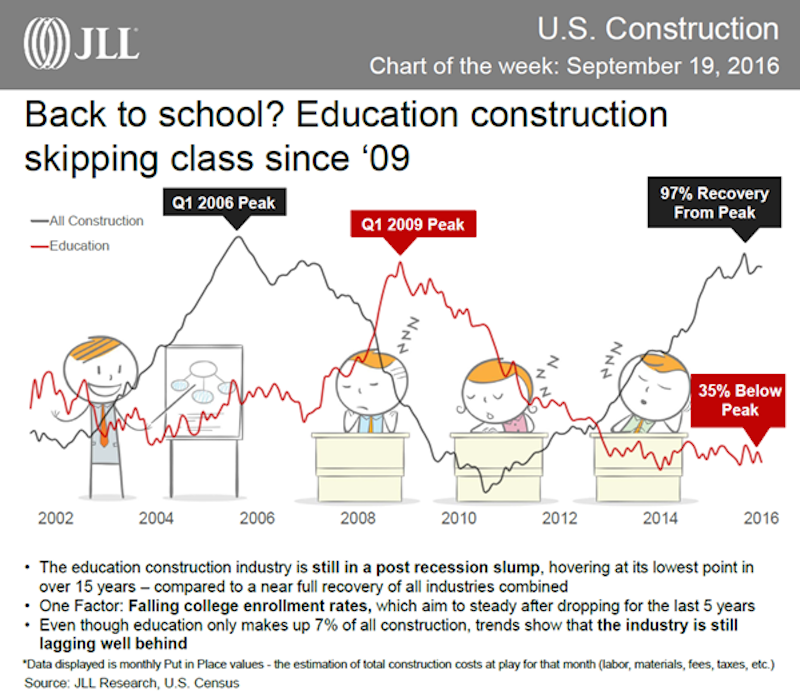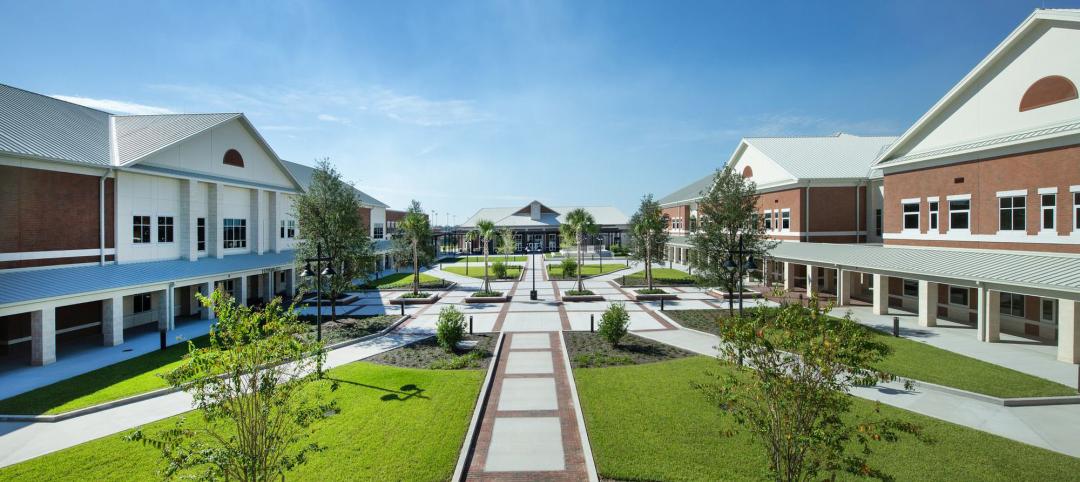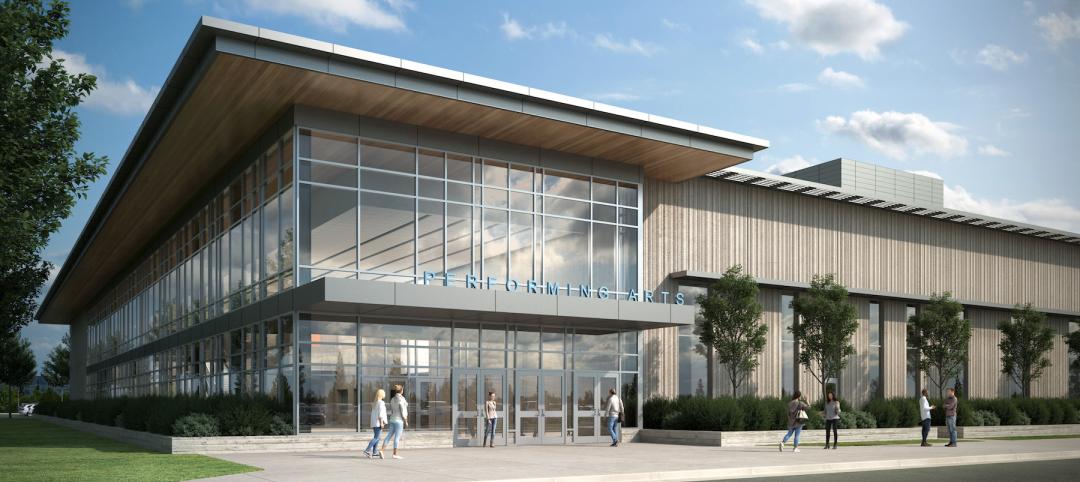Construction investment in the education sector is still in a post-recession slump, even as spending on all construction continues to rise from its low point in early 2011.
The latest “Construction Put in Place” estimates from the Census Bureau show total construction spending in August at $1.142 trillion. That’s a 97% recovery from the most recent spending peak in the first quarter of 2006, and 51.4% higher than the Census estimate for January 2011, $754.7 billion, which was the lowest point for construction during the recession.
The education sector remains one of the biggest in terms of nonresidential construction put in place. But Census’ August 2016 estimate for this sector—$86.1 billion—is still 35% below the peak spending for this sector in the first quarter of 2009.
Indeed, while construction in general has been on the upswing for nearly six years, the education sector has been plummeting from its most recent high of $108.8 billion in May 2009, with a few blips of life in between. Over the past few years, education construction spending has leveled off, though it’s still below the investments in the early and mid 2000s.
Mason Mularoni, JLL’s Project Development and Construction Research Lead, notes that education’s recent peak was mostly stimulated by government funding. “It was almost countercyclical to commercial real estate as the whole.” But in the last several years, government spending has dried up in all but a handful of states (like Texas and California), as school enrollment has fallen off.
“On the demand side, with enrollment flat, state funding has been flat to down,” says Brain Terrell, JLL’s Managing Director and Higher Ed Practice Group Lead.
At the same time, universities find themselves in what Terrell calls a “keeping up with the Joneses” dilemma, where recruiting and retaining students often hinge on the relative quality of a campus’s academic and living facilities and amenities.
To stay in the race, Terrell says more colleges are financing new construction via public-private partnerships, and are leaning toward projects that can produce revenue streams, such as housing, dining, parking and other facilities that might have user fees attached.
Terrell and Mularoni note, too, that education spending is down because many colleges are focused on expanding their graduate school attendance. “So much of undergraduate [learning] can be done online, so why spend more on classrooms?” Terrell says.
A similar dynamic is occurring at the elementary and high school levels, where a growing number of school districts are consolidating schools, and are aligning themselves with teaching pedagogies that incorporate online research into the curriculum. The conventional classroom is giving way to more open collaborative spaces that include outdoor areas.
The question now is whether education construction spending will continue to decline, or if—as data for the past few years show—it will settle at its current level?
Mularoni concedes that the spending peak was probably inflated and unsustainable. “But if you look at the numbers, spending now isn’t that far off from what it was in 2004. We see spending in the future falling somewhere in between these years, because the institutions still say their campuses are in great need of renovation and new construction.”
Related Stories
Senior Living Design | Jun 28, 2024
The country’s largest retirement community expands with educational facilities
The project will include a high school, a K-8 school, and an Early Learning Center aimed at serving the children of residents who work in qualified businesses within The Villages.
K-12 Schools | May 15, 2024
A new Alabama high school supports hands-on, collaborative, and diverse learning
In Gulf Shores, a city on Alabama’s Gulf Coast, a new $137 million high school broke ground in late April and is expected to open in the fall of 2026. Designed by DLR Group and Goodwyn Mills Cawood, the 287,000-sf Gulf Shores High School will offer cutting-edge facilities and hands-on learning opportunities.
K-12 Schools | May 13, 2024
S.M.A.R.T. campus combines 3 schools on one site
From the start of the design process for Santa Clara Unified School District’s new preK-12 campus, discussions moved beyond brick-and-mortar to focus on envisioning the future of education in Silicon Valley.
K-12 Schools | May 7, 2024
World's first K-12 school to achieve both LEED for Schools Platinum and WELL Platinum
A new K-12 school in Washington, D.C., is the first school in the world to achieve both LEED for Schools Platinum and WELL Platinum, according to its architect, Perkins Eastman. The John Lewis Elementary School is also the first school in the District of Columbia designed to achieve net-zero energy (NZE).
K-12 Schools | Apr 30, 2024
Fully electric Oregon elementary school aims for resilience with microgrid design
The River Grove Elementary School in Oregon was designed for net-zero carbon and resiliency to seismic events, storms, and wildfire. The roughly 82,000-sf school in a Portland suburb will feature a microgrid—a small-scale power grid that operates independently from the area’s electric grid.
School Construction | Apr 22, 2024
A school district in Utah aggressively moves forward on modernizing its schools
Two new high schools manifest nuanced design differences.
K-12 Schools | Apr 10, 2024
A San Antonio school will provide early childhood education to a traditionally under-resourced region
In San Antonio, Pre-K 4 SA, which provides preschool for 3- and 4-year-olds, and HOLT Group, which owns industrial and other companies, recently broke ground on an early childhood education: the South Education Center.
K-12 Schools | Apr 10, 2024
Surprise, surprise: Students excel in modernized K-12 school buildings
Too many of the nation’s school districts are having to make it work with less-than-ideal educational facilities. But at what cost to student performance and staff satisfaction?
K-12 Schools | Apr 1, 2024
High school includes YMCA to share facilities and connect with the broader community
In Omaha, Neb., a public high school and a YMCA come together in one facility, connecting the school with the broader community. The 285,000-sf Westview High School, programmed and designed by the team of Perkins&Will and architect of record BCDM Architects, has its own athletic facilities but shares a pool, weight room, and more with the 30,000-sf YMCA.
K-12 Schools | Mar 18, 2024
New study shows connections between K-12 school modernizations, improved test scores, graduation rates
Conducted by Drexel University in conjunction with Perkins Eastman, the research study reveals K-12 school modernizations significantly impact key educational indicators, including test scores, graduation rates, and enrollment over time.

















